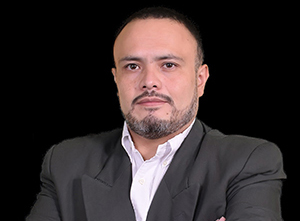Prison romances that cost a lot

By: Hugo Marcelo Balderrama - 06/04/2025
Guest columnist.Share:
In 1989, on July 13, Cuban military officers Arnaldo Ochoa and Tony la Guardia were executed, many say they were also forced to confess, for drug trafficking from Cuba to the United States. Although Fidel Castro used both deaths as marketing to whitewash the Cuban Revolution, the truth was otherwise: the commander-in-chief himself was a bigwig, something fully confirmed by his bodyguard, Reynaldo Sánchez, and one of his associates, the Bolivian Roberto Suarez.
A couple of years later, in the early 1990s, and almost parallel to the birth of the Sao Paulo Forum, the governments of Peru, Bolivia, and Colombia, along with the United States, began a comprehensive program to combat drug trafficking and organized crime. Many drug traffickers ended up in prison and had as companions various guerrillas from the FARC, ELN, Shining Path, and Bolivia's EGTK. In fact, Peruvian drug trafficker Luis García shared a cell with Osman Morote, the Shining Path ideologue. In Bolivia, the García Linera brothers were financially supported by Hugo Rivero Villavicencio, a bigwig of the 1980s.
Although the left's strategy of allying with crime began in the 1960s, everything seems to indicate that it was during that time that the criminal romance materialized.
Consequences?
At one point, the FARC earned a minimum profit of US$50 million a year, just from the coca base trade in their areas of influence, and up to US$90 million from the movement of cocaine. To put it in context, that's equivalent to the entire foreign trade of a small department in Bolivia, for example, Chuquisaca. With that money, they did what Fidel Castro and the left always wanted: destabilize the continent. In this regard, security expert Eneas Biglione, in his 2007 essay "Shining Path, Institutional Fragility, and 21st-Century Socialism in Peru," recounts that:
Fidel Castro, Hugo Chávez, and the FARC leaders, whose sinister plans for the continent were recently revealed in the international media, are facilitating the resurgence of violence in Peru and triggering a contagion effect toward neighboring countries and the entire region.
For his part, Emilio Martínez, in his book: Five Myths of October, shows that the FARC played an active role in the overthrow of President Sánchez de Lozada in October 2003. Furthermore, the computer of Raúl Reyes, the deceased FARC commander, revealed a high level of coordination between the guerrilla and senior officials of the Movement Toward Socialism in Bolivia.
As if that weren't enough, Felipe Quispe, better known as El Mallku, openly acknowledged that he had sent at least five groups of young Aymara men to be trained by the FARC. The late leader and guerrilla also accused Evo and his government of denying their alliances, saying:
We cannot be like the current government, which ignores and is ashamed of its origins and its friends, publicly declaring it doesn't know those who were its allies and political supporters. We don't deny anything. We send young people to be trained by the FARC; training is not a crime.
For Quispe, learning to slit people's throats and trepan skulls was the equivalent of a diploma or a specialization course.
The FARC's strategy in Bolivia, which was later replicated in at least Chile, Ecuador, and Argentina, consisted of: 1) generating conflicts to overthrow democratic governments; 2) establishing transitional governments subservient to their causes (Carlos Mesa played that role); and 3) forcing constitutional changes to place all state institutions at the service of their project.
Sadly, the FARC, in direct coordination with the high command of the Sao Paulo Forum, succeeded in destroying the Republic of Bolivia, establishing a narco-state, and installing a narco-socialist dictatorship.
«The opinions published herein are the sole responsibility of its author».